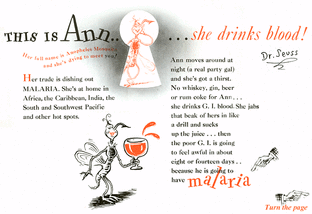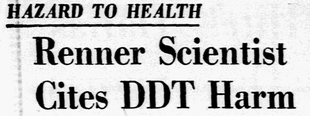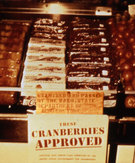Golden Age of Pesticides
"The possibilities of DDT are sufficient to stir the most sluggish imagination... In my opinion it is the War's greatest contribution to the future health of the world."
- General James Stevens Simmons, How Magic is DDT: The Saturday Evening Post, January 6, 1945
- General James Stevens Simmons, How Magic is DDT: The Saturday Evening Post, January 6, 1945
DDT(dichlorodiphenyltrichloroethane) was widely regarded as a panacea which protected citizens from epidemics and revolutionized American agriculture. Virtually the entire country viewed DDT as a godsend.
Birth of Insecticides - World War II
|
"Armed with DDT, the Army has conquered the fear of typhus. For the first time in history, this ruthless companion of disaster, famine and poverty has lost all right to its murderous title of champion of the ancient plagues of war."
- General James Stevens Simmons, How Magic is DDT: The Saturday Evening Post, January 6, 1945 |
Mass Proliferation of Insecticides
|
"In these early days, there were no downsides to pesticides. .. DDT had been used effectively during World War II to kill the insects that carried malaria and typhus, saving the lives of thousands of GIs. In the 50s, very little was known about any problems with these chemical miracles. "
- Bill Ganzel, Ganzel Group, 2007 |
"...sections of the city are literally fogged with the insecticide in the fight to stop the spread of polio..."
- Universal News, 1946 |
|
|
"...8,000 head of cattle showed that spraying or dipping with DDT through the fly season improved the gains of beef cattle on pasture an average of one-half pound a day... the entire 8,000 head it meant 400,000 pounds more beef produced at a cost of some labor and a little money... The treatment indicated that knocking out the flies would improve the flow of milk by 15 percent." - Nebraska Farmer Magazine, 1946 |
Side-effects of Pesticides
|
"The Food and Drug Administration today urged that no further sales be made of cranberries ...because of their possible contamination by a chemical weed killer, aminotriazole, which causes cancer..."
- Arthur S. Flemming, Secretary of Health, Education and Welfare, November 9, 1959 |




